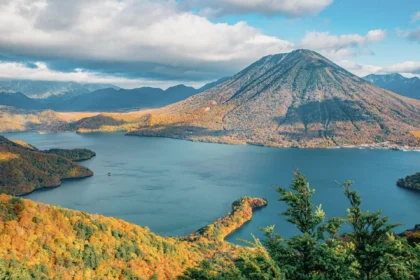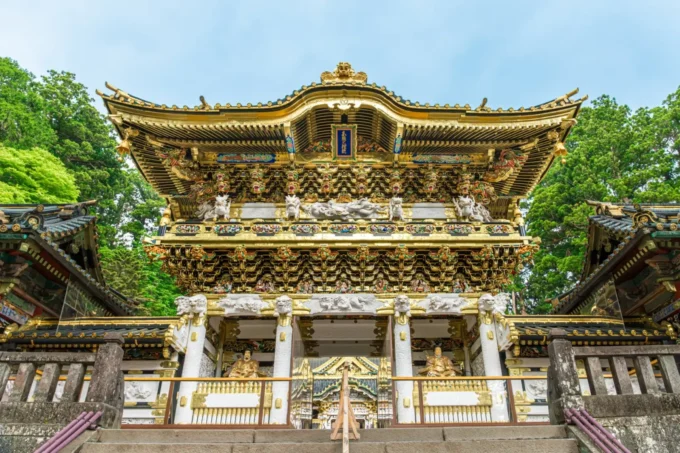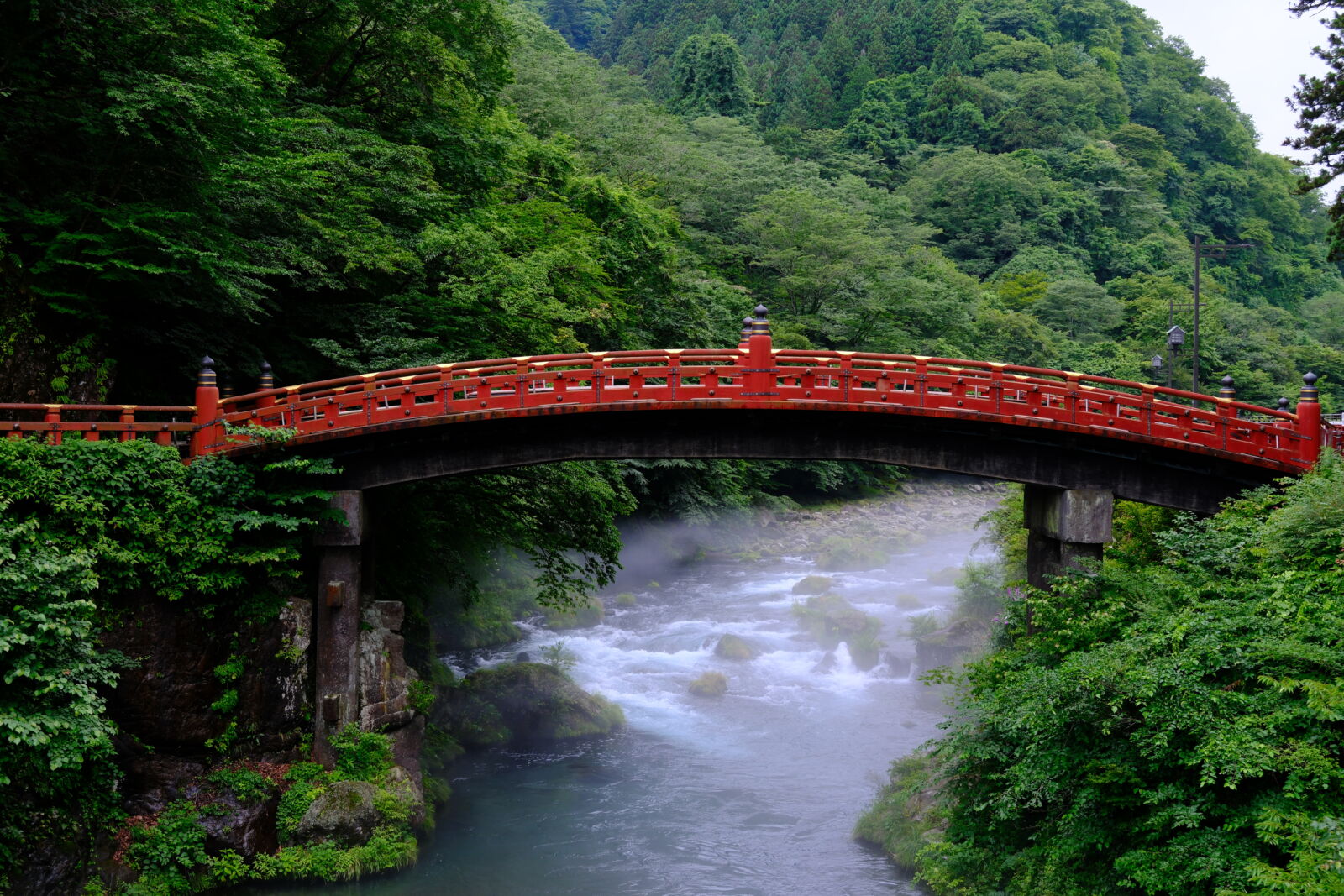
Nikko is a fantastic destination for anbody wanting to experience Japan and the beauty of its nature. Nestled in the mountains north of Tokyo, Nikko is well known for its stunning natural landscapes and tranquil atmosphere. Pair this with the beautiful shrines and temples tucked away in the mountains, and you can quickly understand why Nikko appeals to those looking for a serene and spirtual escape from the hustle and bustle of the busy Capital of Tokyo. We have created this page to give you our top recommendations on how to enjoy nature in Nikko, from its lake and waterfalls, mountains to ropeways, onsen and gorges. On this page you will find the following information :
— Nikko: The Perfect Getaway for Nature Lovers
— 20 Best Things to Do In & Around Nikko
— Where to Stay In & Around Nikko
WHERE IS NIKKO?
Nikko is a small city in Tochigi Prefecture, approximately 150KM / 2.5 to 3 hours to the north of Tokyo. Nikko is most famous for its striking Shinto shrines and mausoleums, that commemorate Tokugawa Ieyasu – the founding ruler of the Tokugawa Shogunate. Inscribed on the World Heritage list in 1999, the Nikko shrine and temple complex attracts millions of visitors each year. Nikko and the surrounding region also boasts ‘onsen’ (natural hot spring) towns and the natural attractions of Nikko National Park. For visitors heading to Nikko from Tokyo, it is quick and easy to reach with a range of train services connecting the two – the easiest of which takes just under 2-hours, using the Tohoku Shinkansen to Utsunomiya Station and then transferring to the local JR Nikko Line. For full details, see ‘Getting to & Around Nikko’ below.
NIKKO: THE PERFECT GETAWAY FOR NATURE LOVERS
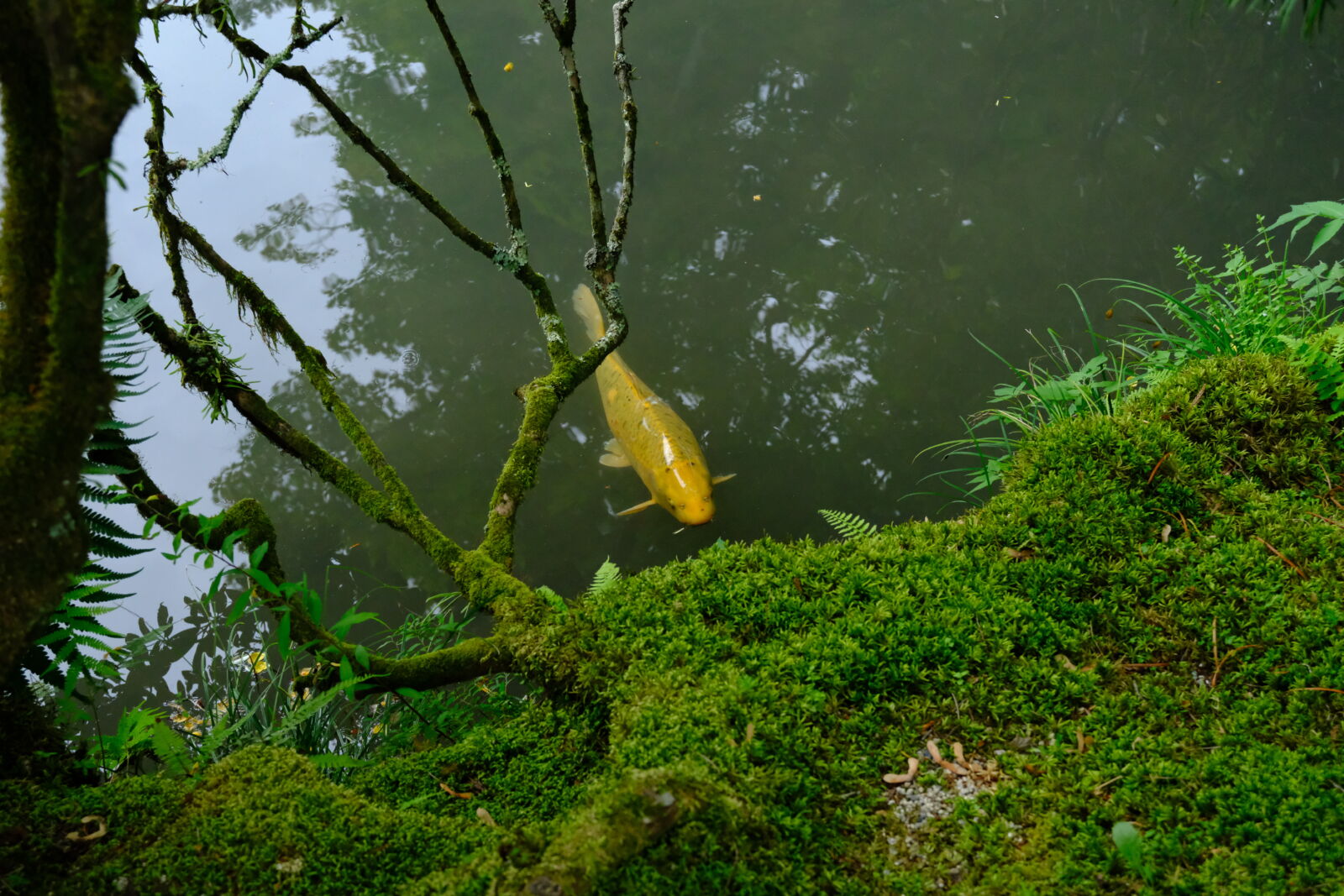
Whether you’re into relaxing walks, hiking, nature photography or visiting stunning natural landmarks, Nikko offers so much to see and do in the great outdoors. Home to one of Japan’s most beautiful National Parks, Nikko National Park is home to a large number of attractions, natural landmarks and accommodation to make your trip perfect. You can truly enjoy a peaceful retreat from the skyscrapers and bright neon lights of Tokyo. To make it even more special, you can even take advantage of Nikko’s Onsen (Hot Springs) where you can enjoy bathing in naturally heated waters from the geothermal energy that courses through the landscape. Nothing gets more natural than that! Most of the recommendations we mention below are based within Nikko National Park, so read on to see what our top recommendations are for nature lovers!
1 / Nikko National Park and Senjogahara Marshlands
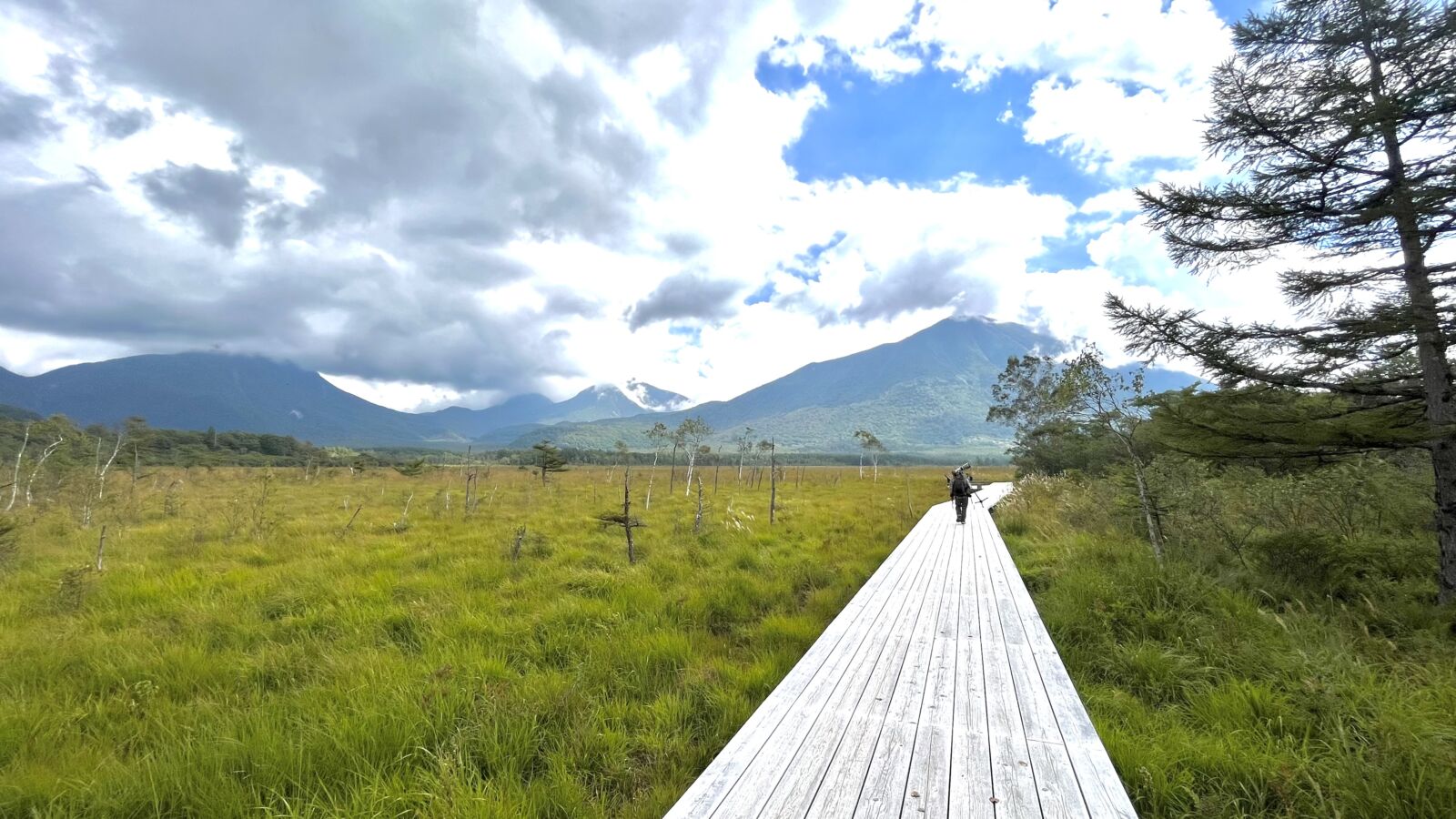
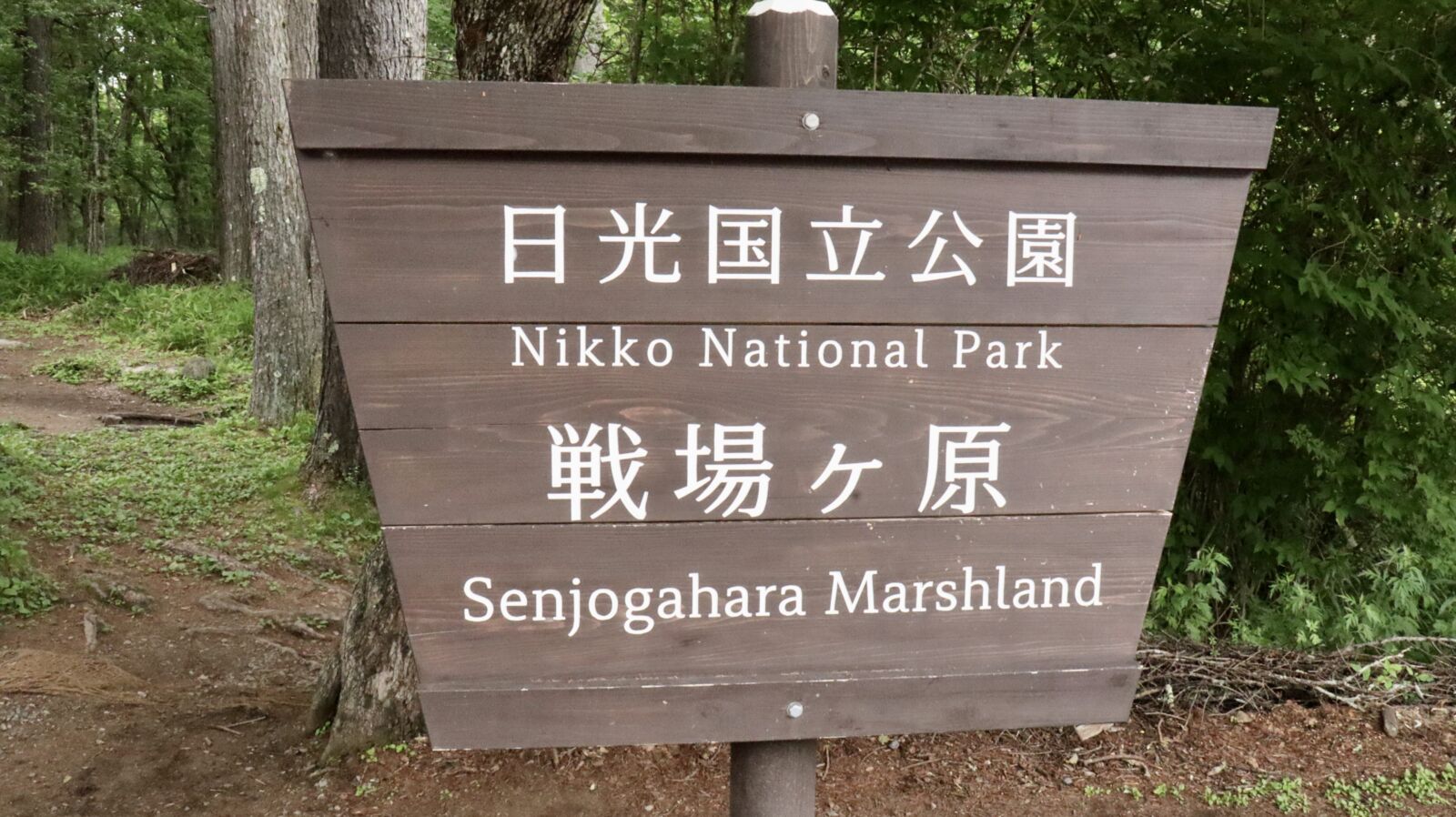
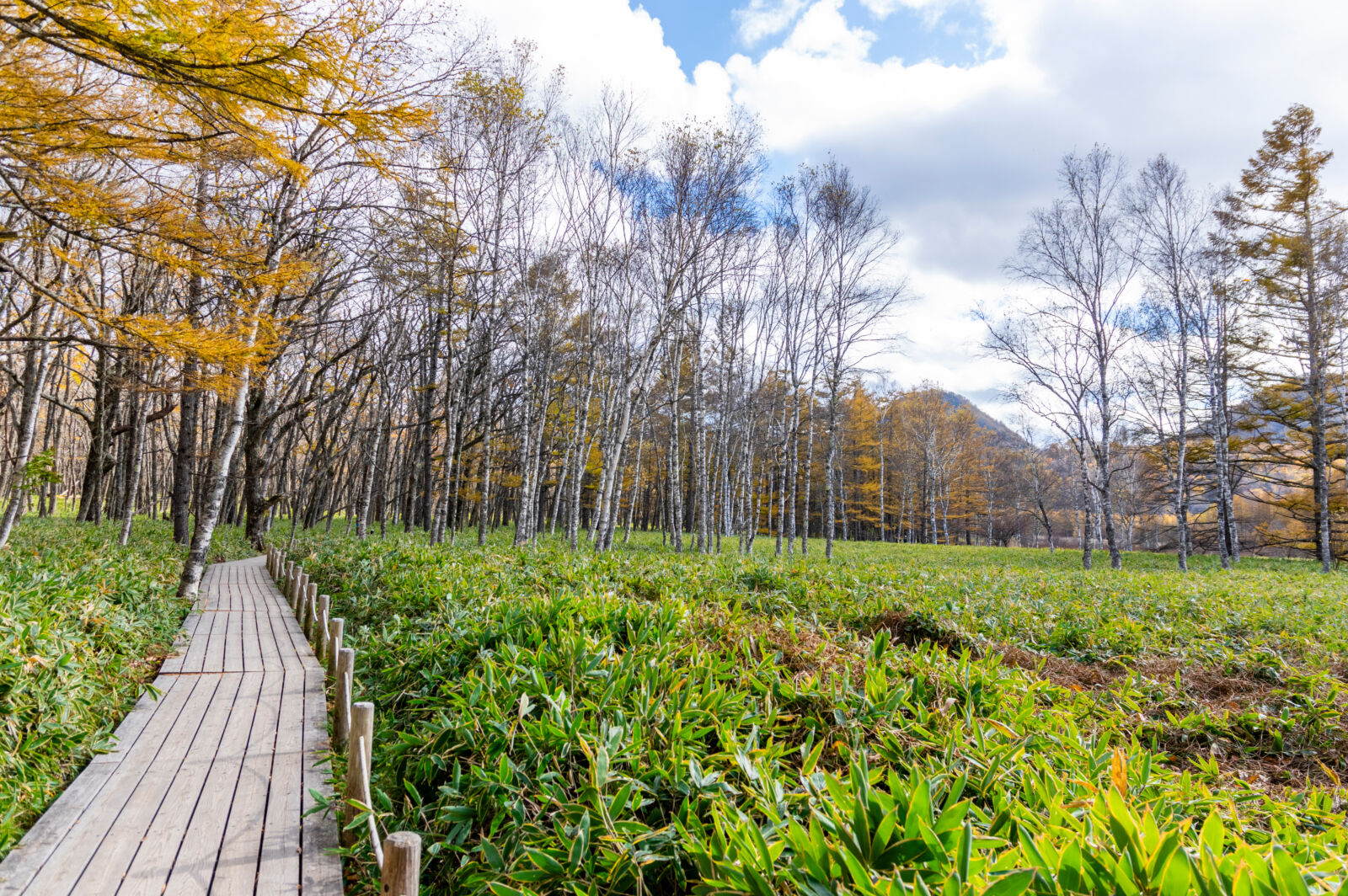
Nikko National Park is an expansive landscape full of natural wonder and beauty. Most of our recommendations on this page are based within this amazing landscape, and one of our top picks is Senjogahara Marshlands! The marshland is perfect for easy walking and is home to scenic walking trails. One of these is in the form of boardwalk trails making this very accessible and easy under foot. The trail winds through the marsh, which provides great views of the surrounding nature and landscape, including Mount Nantai. The main trail spans approximately 6 kilometeres, depending on the route you choose. The Senjogahara Nature Trail is another popular route, where walkers can start from Ryuzu Falls and walk through the Marshlands to Yudaki Falls. This walk is for more advanced walkers. As part of the marshland there is Senjogahara Plateau. This area is home to a wide variety of birds, making it a perfect spot for birdwatchers or any wildlife enthusiast! Depending on the time of year, you can spot Heron, eagles and woodpeckers.
2 / Lake Chuzenji and Chuzenji Onsen Area
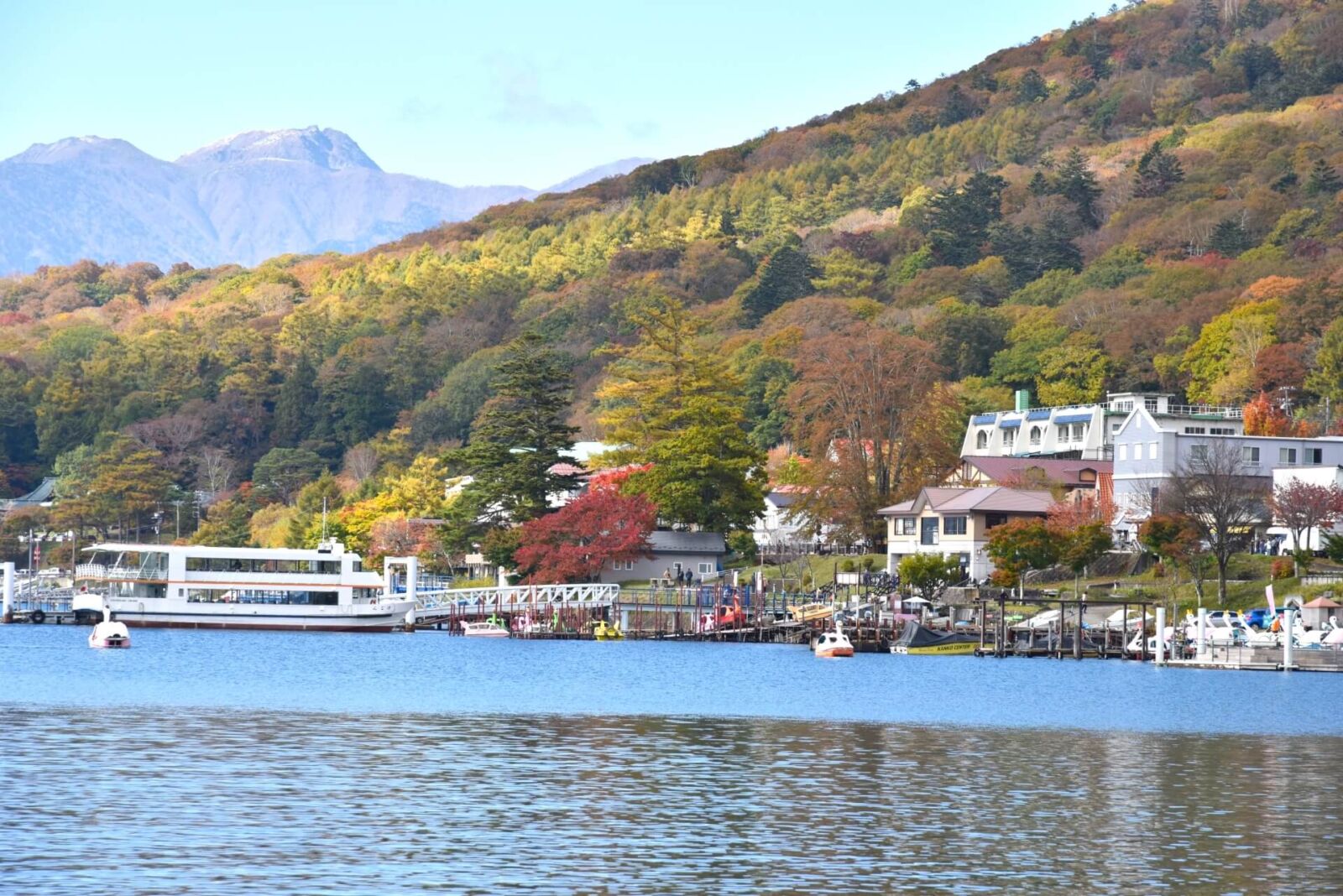
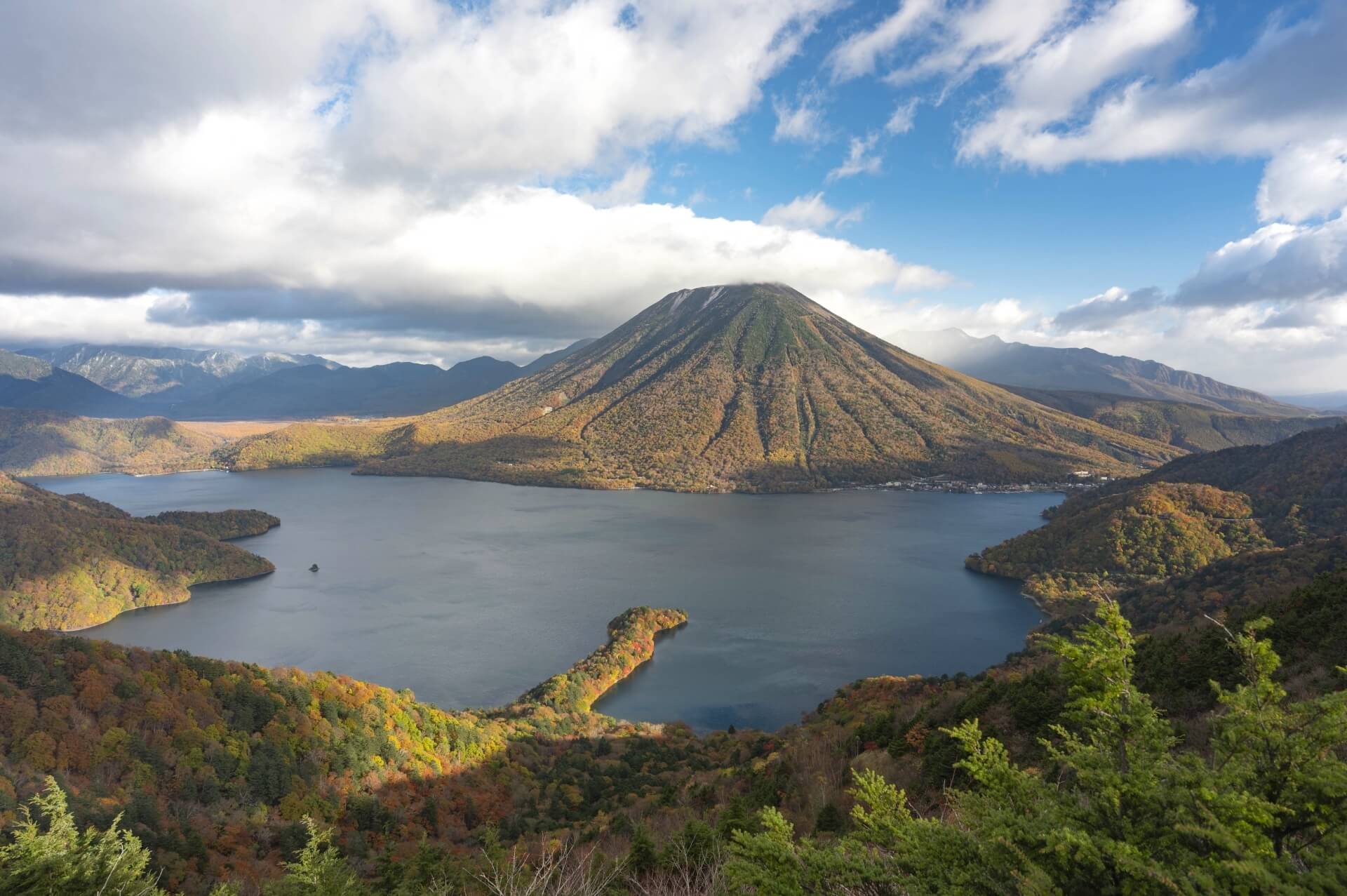
Sitting around 20km to the east of the World Heritage Nikko shrine and temple complex, Chunzenji Onsen is a traditional hot spring village lining the shores of Lake Chuzenjiko. As an ‘onsen’ town, most hotels and guesthouses have their own, in-house hot springs for the exclusive use of guests. Therefore, this make Chuzenji one of the best areas to base yourself for your Nikko trip. Lake Chuzenjiko sits around 1270 metres above sea level blessing it with a cool climate throughout the year. As such, it has long been used as a place of escape and refuge from the summer heat and humidity of Tokyo. Visitors choosing to stay in the area can enjoy boat cruises on the lake along with hiking trails that offer some fantastic outdoor experiences and views of the lake, surrounding mountains and wider Oku-Nikko region. You can even rent your own boat or take part in canoeing activities!
3 / Waterfalls - Kegon Falls and Ryuzu Falls
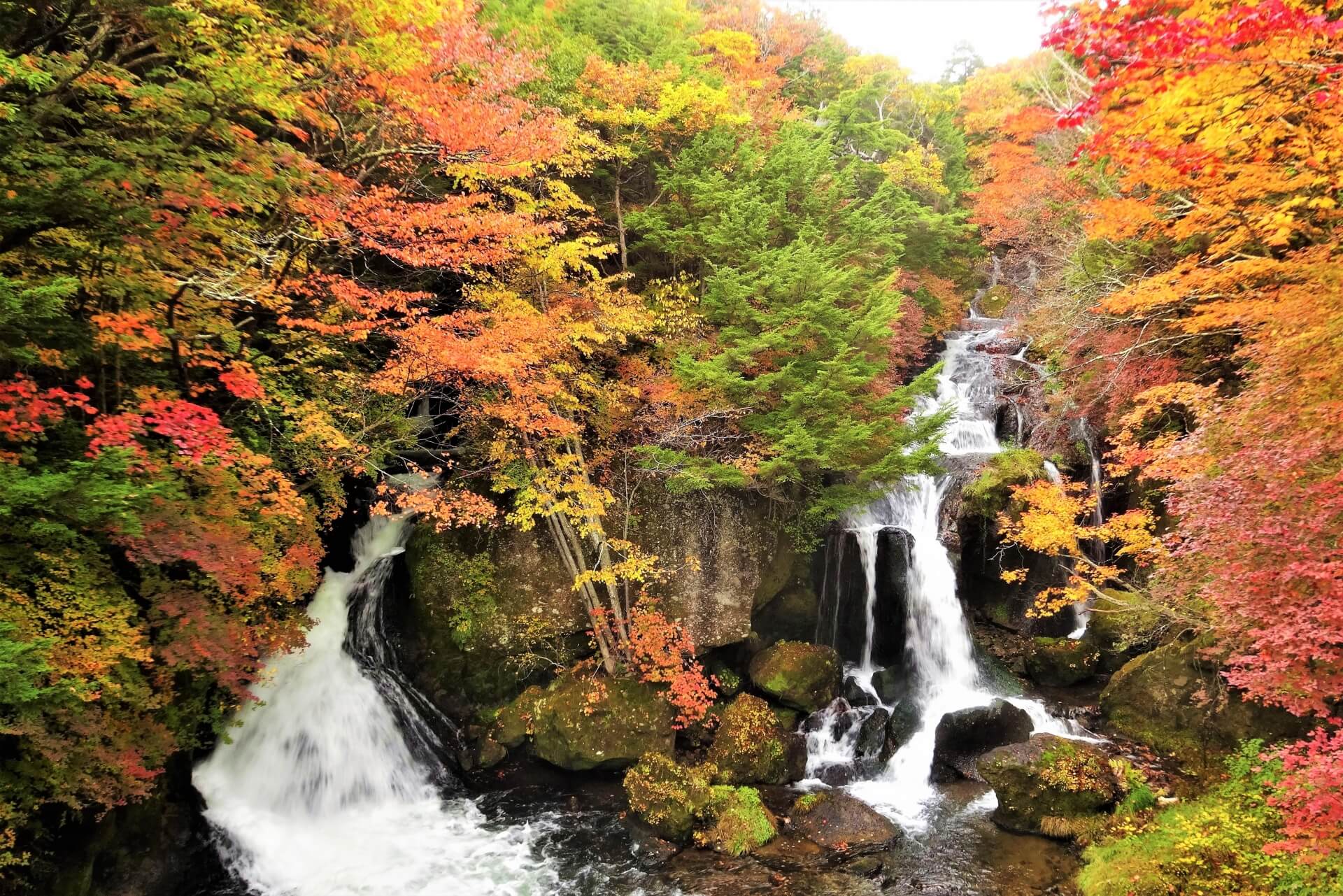
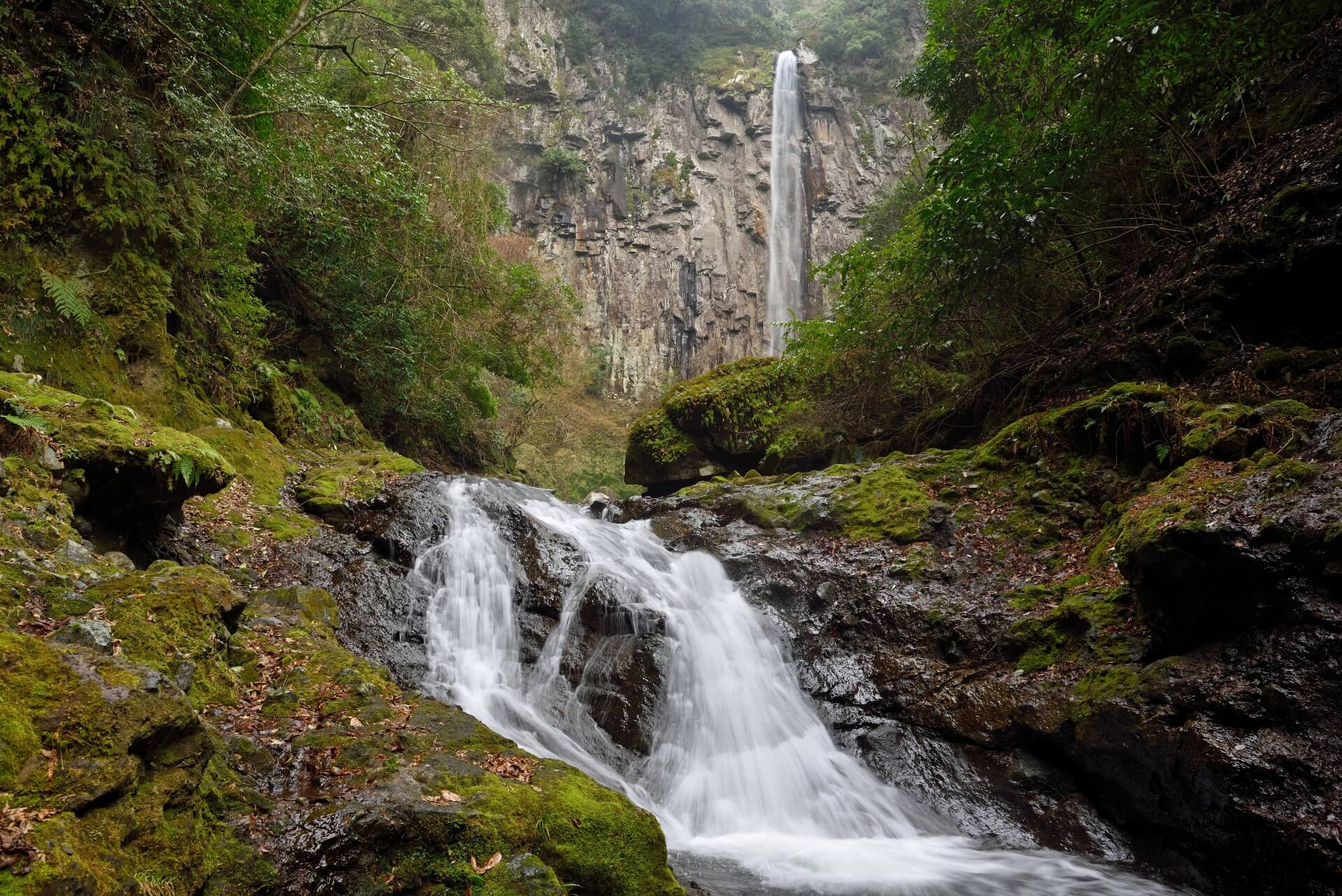
For those wanting to chase waterfalls, Nikko is home to many. The most famous and popular are Kegon Falls and Ryuzu Falls. At Kegon Falls visitors can take an elevator to an observation platform which sits close to the base of the waterfall where you enjoy fantastic views and feel truly engaged with nature. The source of this spectacular waterfall is Lake Chuzenji, and it cascades from a height of 97 meters, with Kegon Falls being the only exit point for the lake. If you want to have a different view of Kegon Falls, we recommend visiting Akechidaira Ropeway where you can see panoramic views of both Kegon Falls and Lake Chuzenji together!
Ryuzu Falls meaning ’Dragon Head Waterfall’ in Japanese. It is said the shape of the falls looks like the head of a Dragon! Ryuzu is surrounded by many trees, making it the perfect Autumn leaf viewing spot in the months of October and November. The waterfall is free of charge to see, where visitors can enjoy an observation deck. To reach both of the waterfalls, visitors can take the local sightseeing buses. For Kegon Falls, coming from either Tobu Nikko station or JR Nikko station, it will take approximately 40 minutes using the sightseeing bus depending on how busy traffic is. Make sure to use the buses bound for Chuzenji Onsen, and get off at the final bus stop. For Ryuzu Falls, coming from either Tobu Nikko station or JR Nikko station, it will take approximately 50 minutes using the sightseeing bus depending on how busy traffic is. Make sure to use the buses bound for Yumoto Onsen, and get off at the Ryuzu no Taki bus stop.
4 / Mount Nikko Shirane, Hiking and Winter Sports
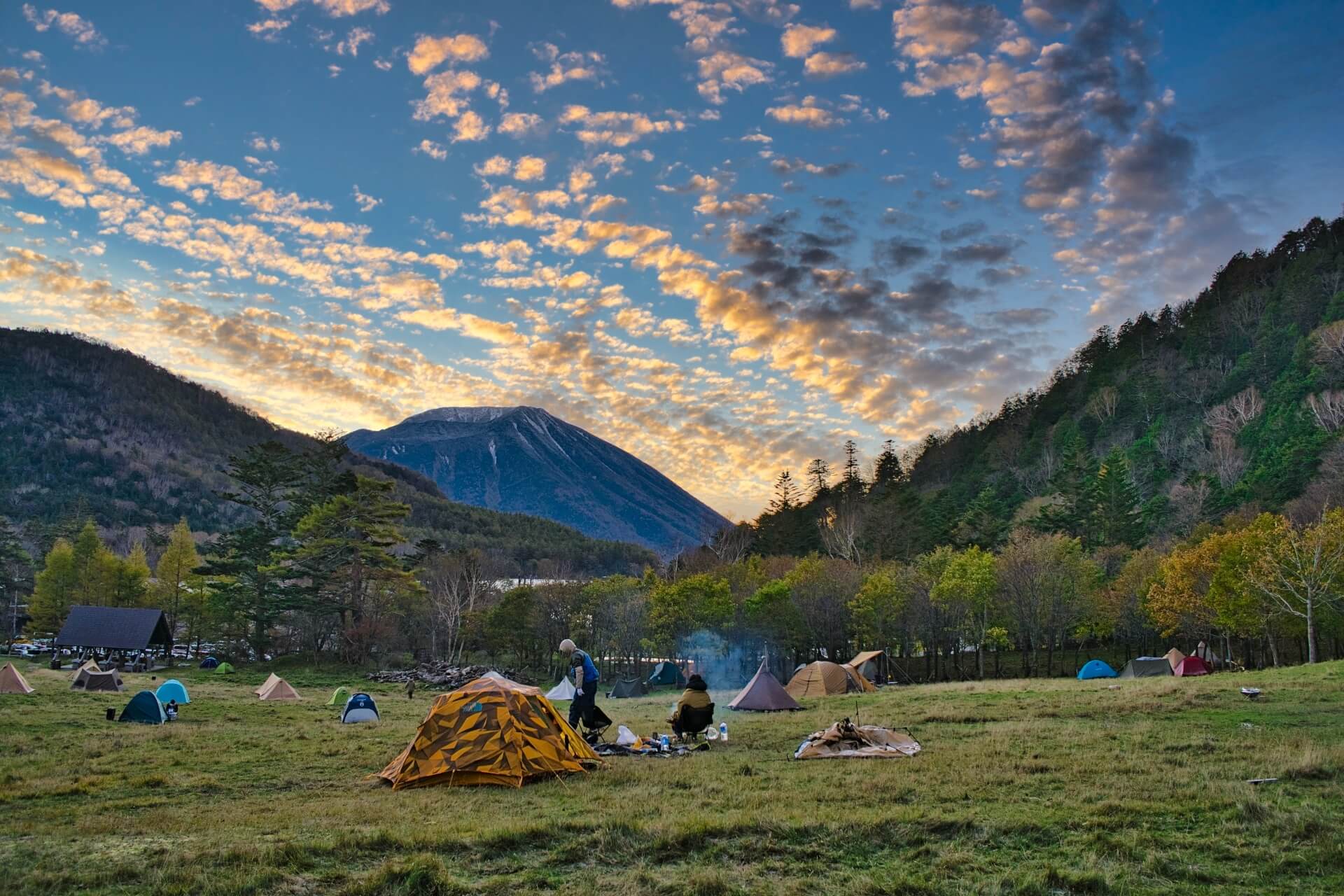
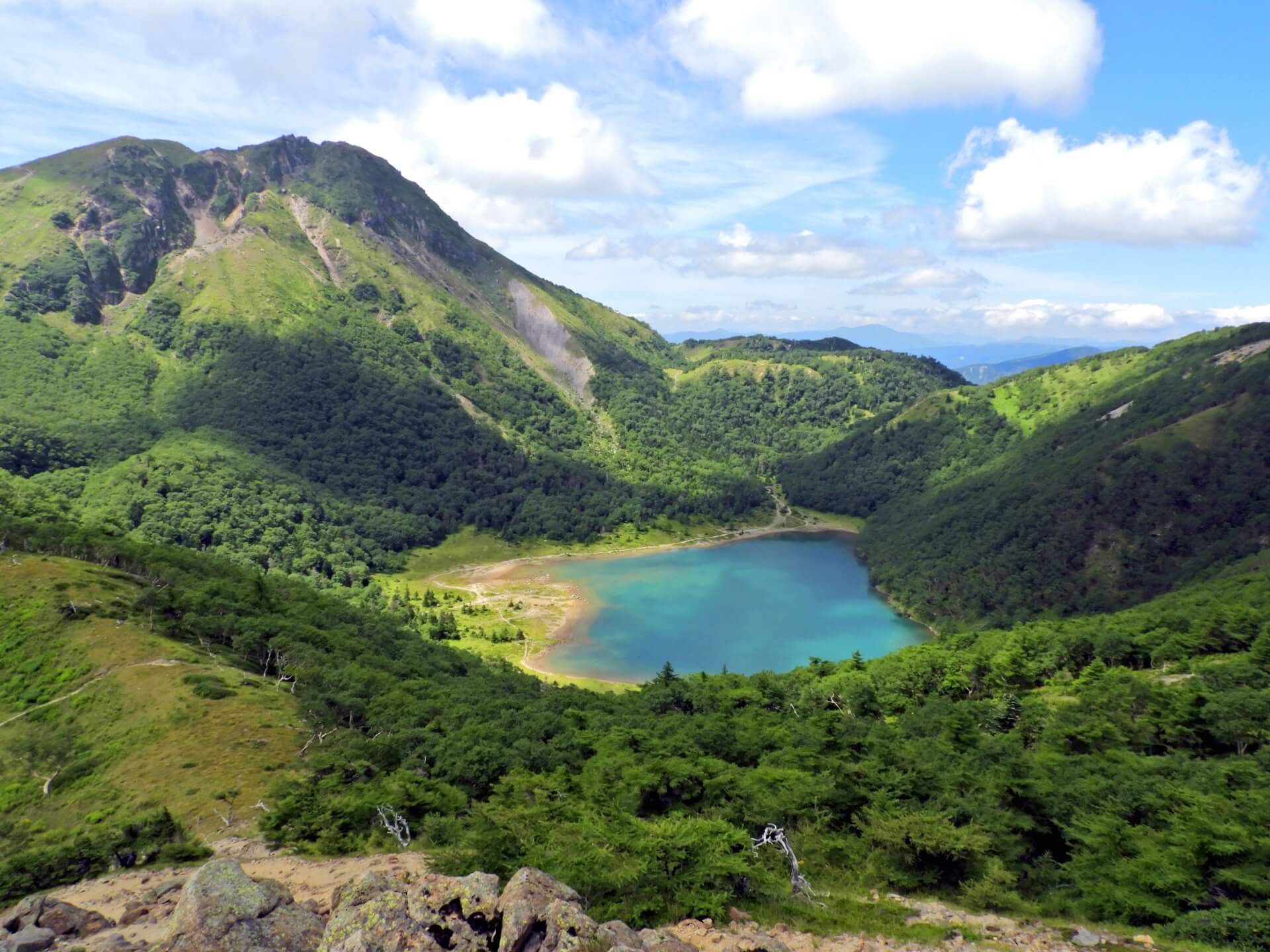
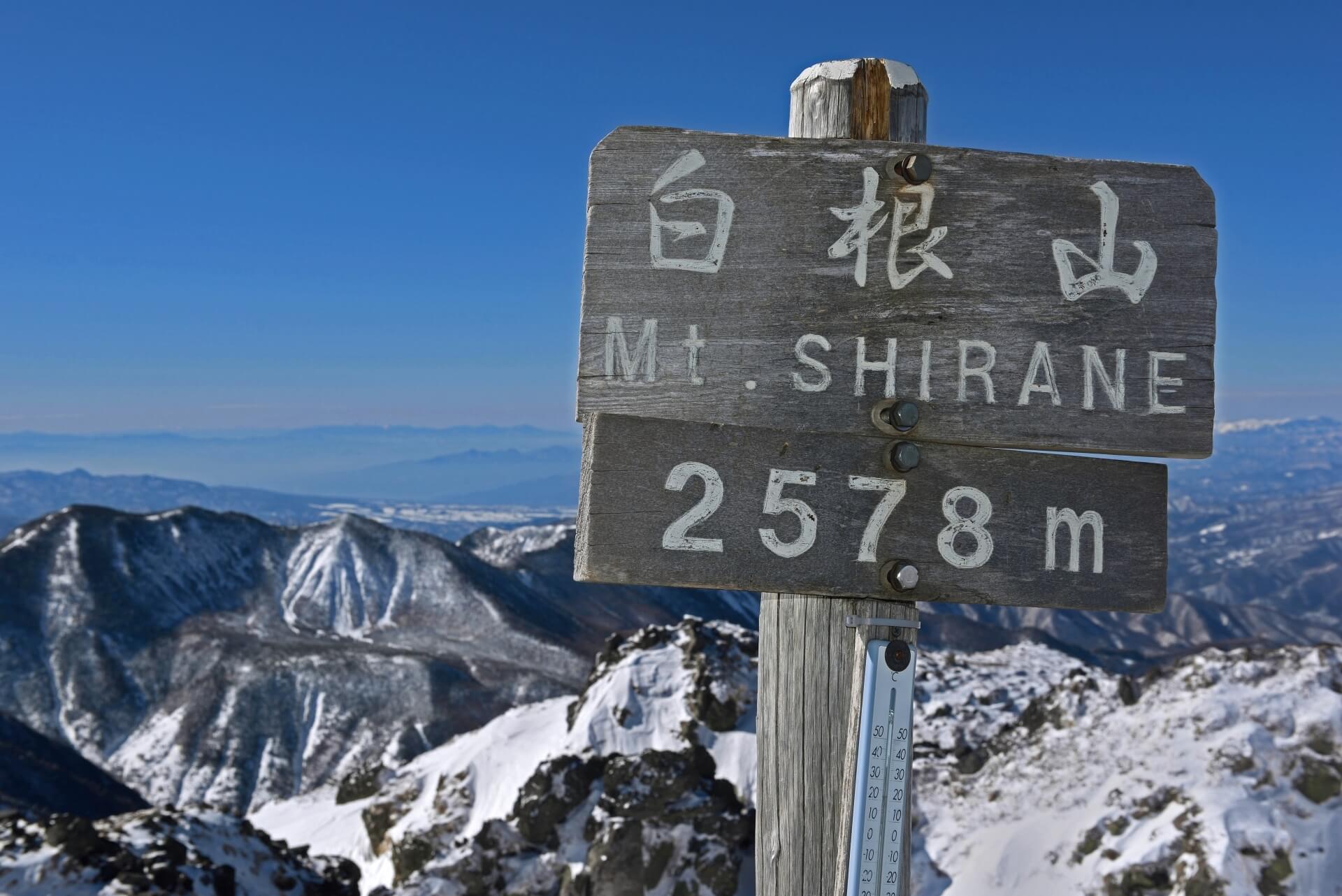
Mount Shirane is a stratovolcano located in Nikko National Park which borders both Nikko and Gunma in Tochigi prefecture. It is the highest mountain in North Eastern Japan, standing at 2,578 meters high! If you’re an avid hiker, there is one main trail to climb. Hikers can enjoy stunning views, with the trail often still seeing snow in June and July. If you want to reach the peak without hiking, you can take the Nikko Shirane Ropeway starting from the 1,400 meter mark which will then take you as far as the 2,000 meter mark. Our top tip is to take the ropeway during the Autumn season to see stunning panoramic views of the Autumn leaves and colourful landscape. In the Winter months, there are popular ski resorts such as the Marunuma Kogen Ski Resort suitable for all ski abilities. A popular place for hikers to stay before making their climb is Yumoto Onsen on the East side. If you’re travelling from JR Nikko station or Tobu Nikko station, you can take the bus heading for the Nikko Shirane Ropeway bus stop.
5 / Shinkyo Bridge and River Daiya
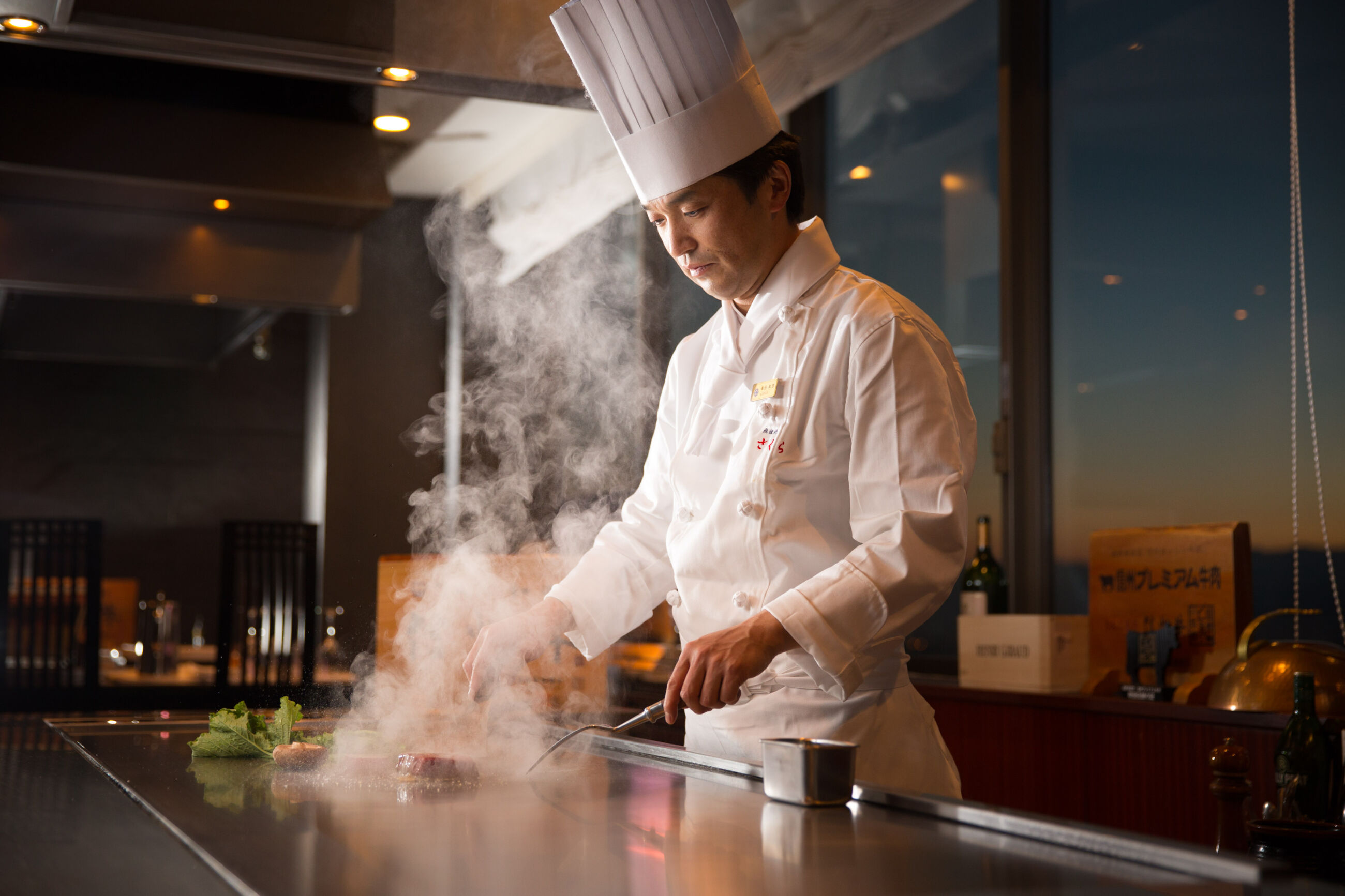
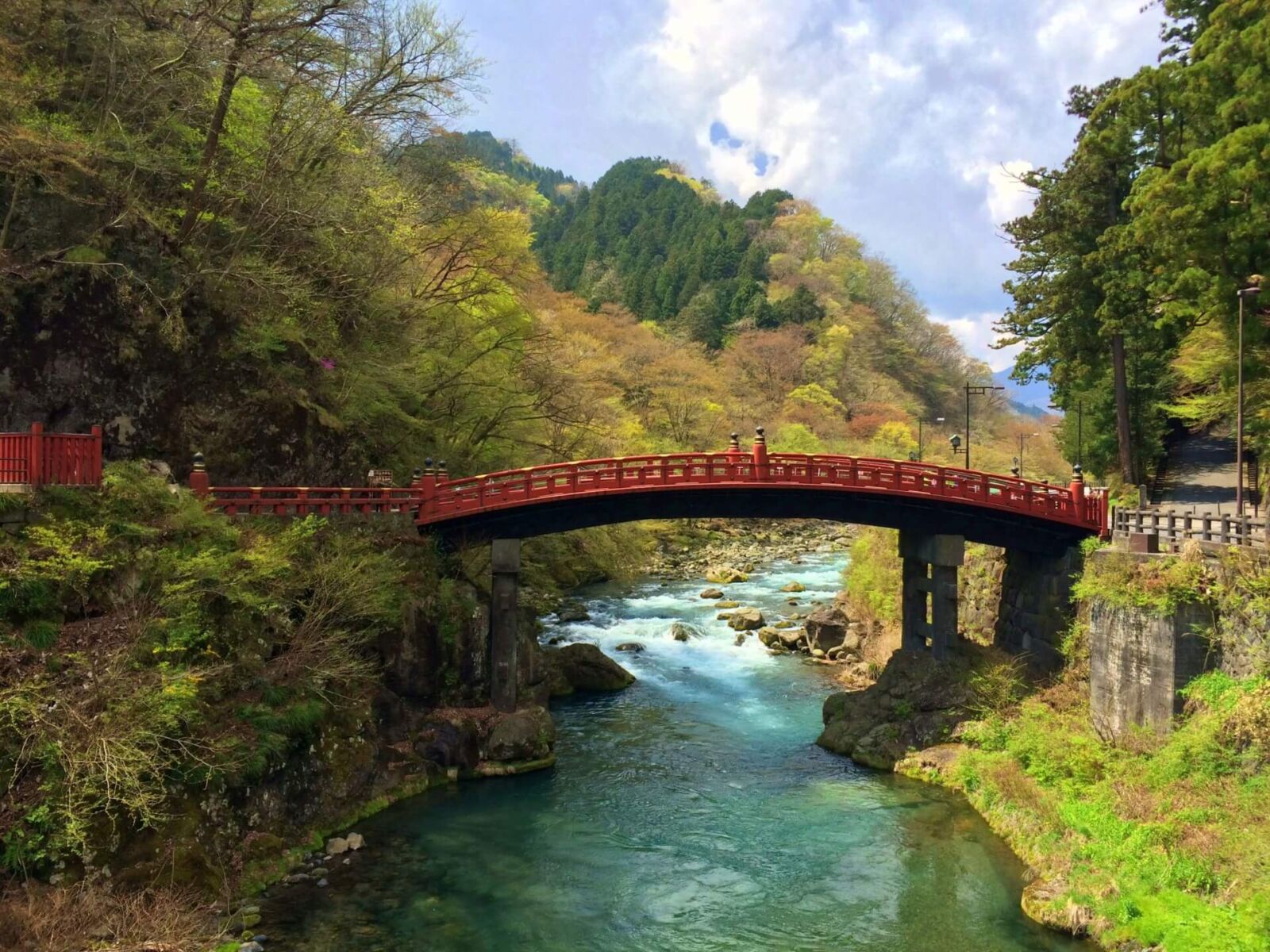
When you’re in Nikko you have to make sure to take in the glorious sight of the iconic Shinkyo Bridge, an historic bridge dating back to 1639! You can enjoy great views of the bridge from the main road, but if you wish to go onto the bridge you can for a small fee of 300 yen. Shinkyō Bridge crosses over the stunning Daiya river, the main river that runs through all of Nikko from the mountains. The gorgeous clear waters, lush greenery, and vivid colour of the bridge makes this a great nature viewing spot where you can feel a sense of calm and traditional Japan. In the Autumn, the scene becomes even more impressive as pops of gold, red and orange light up the natural scene in front of you!
6 / Kanmangafuchi Abyss
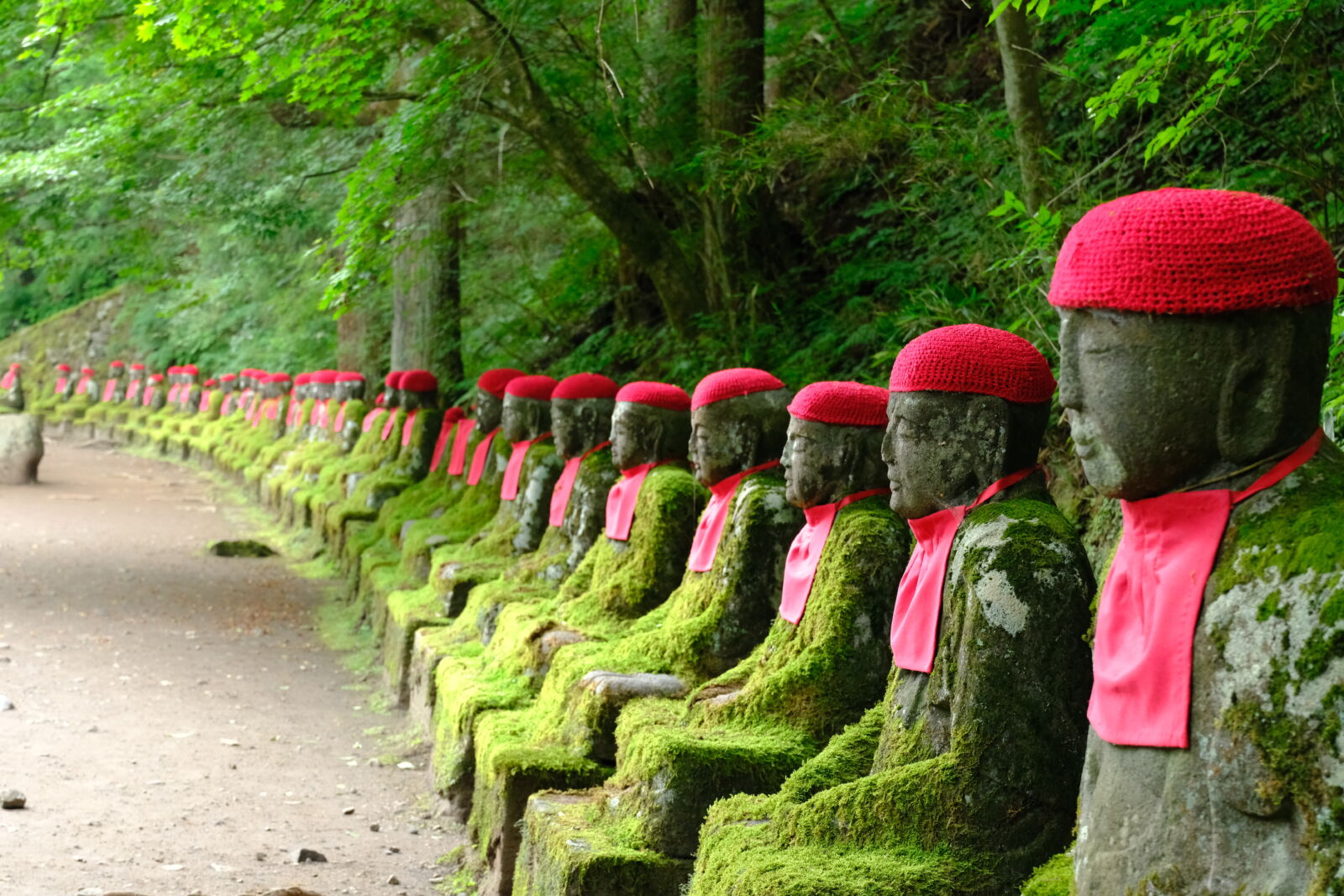
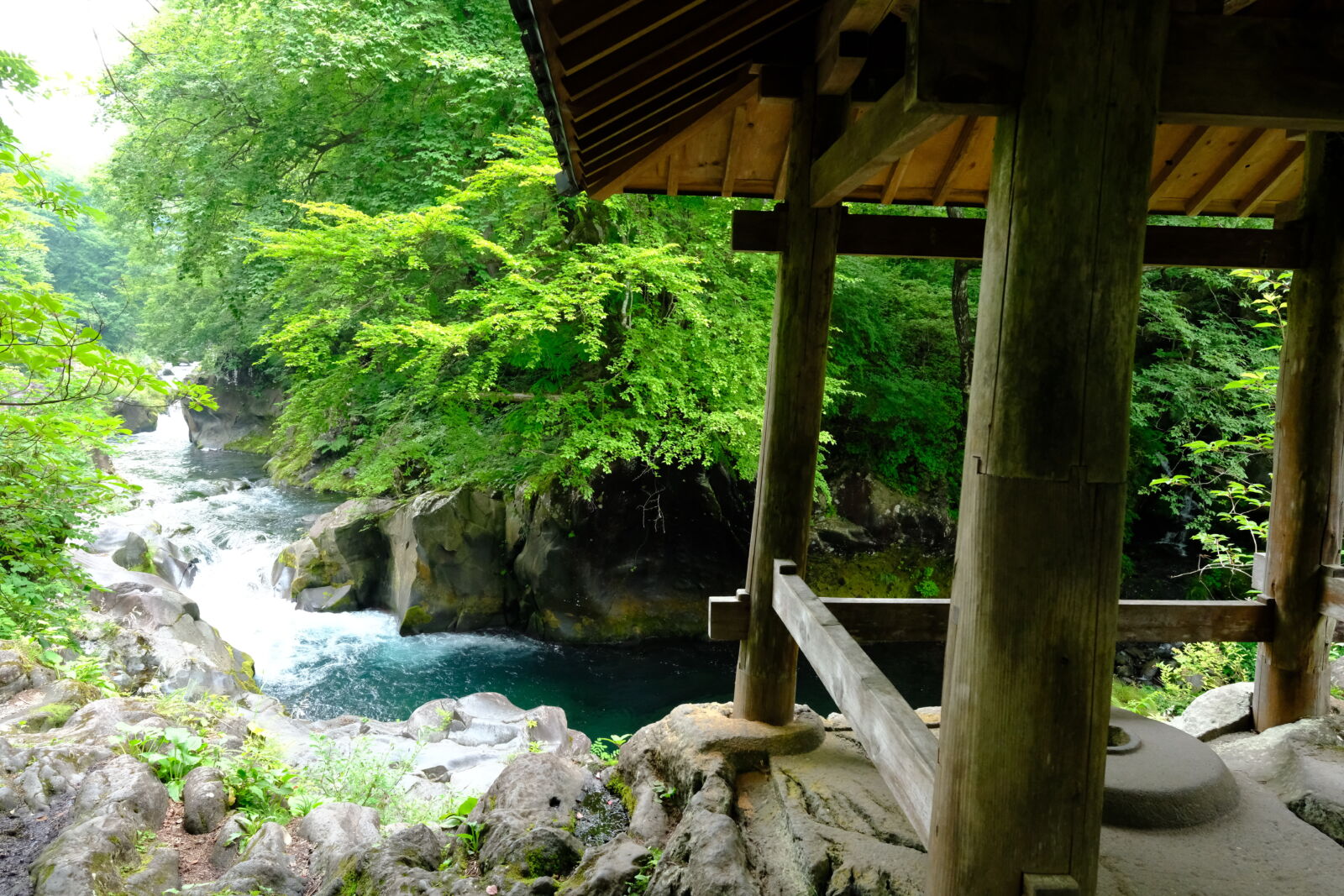
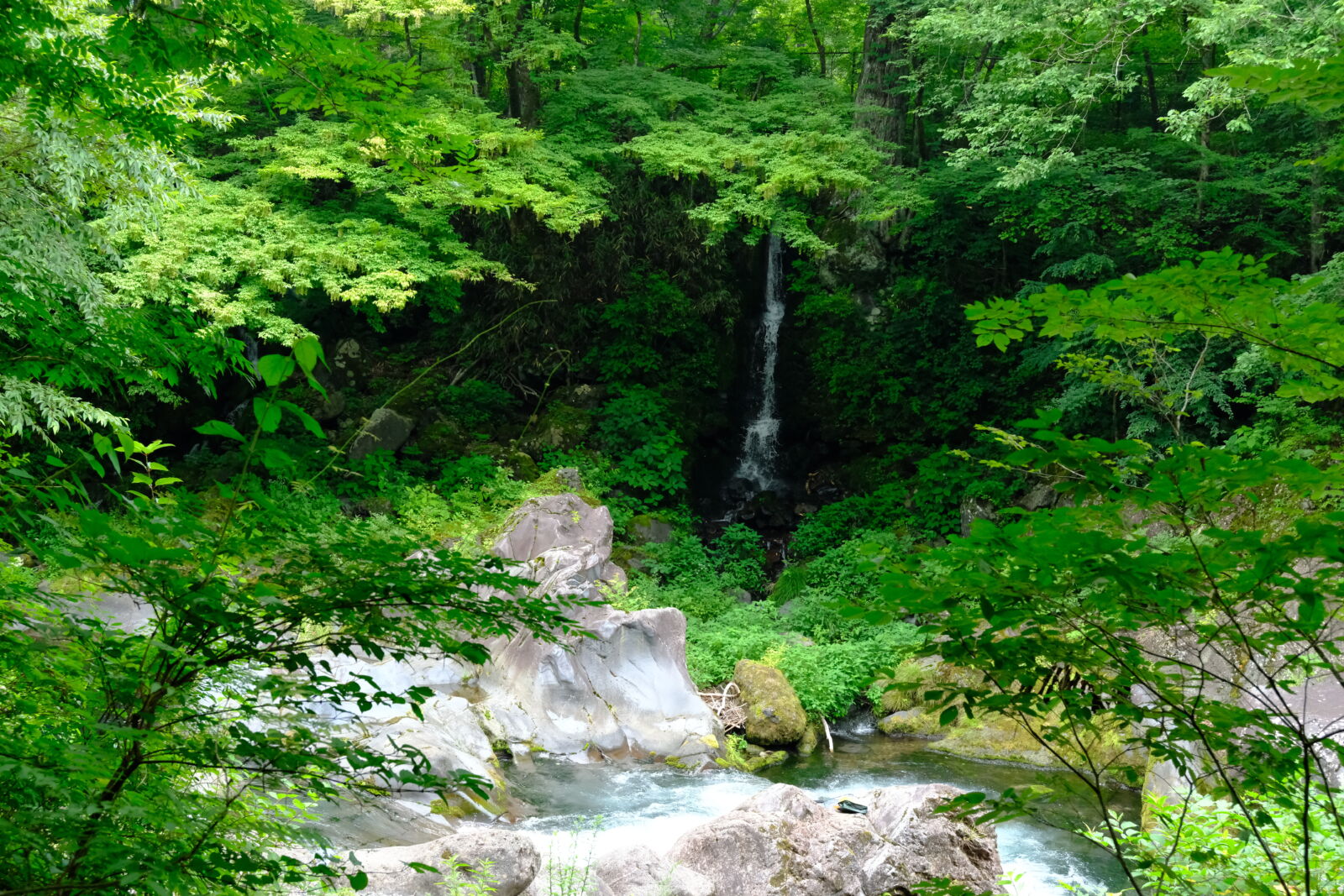
Kanmangafuchi Abyss is a stunning gorge, and very much a hidden gem in the Nikko area. You can comfortably spend around 30 - 40 minutes here walking among nature and enjoying the views. It is especially beautiful in the Autumn when the Abyss is shrouded in gold and red leaves. The Abyss was created from volcanic activity and the eruption of nearby Mount Nantai around 7000 years ago, where lava seeped into the area and created the gorge shape you see today. The gorge has a small temple called Jiun-ji which was founded in 1654 by a Buddhist Monk of high ranking. The Jizo statues there also known as ’Bake Jizo’ (Ghost Jizo) are one of the most notable parts of the gorge and Abyss, and are said to be protectors and guardians of children who have passed away. Moss covers many of the statues and rocks, and it feels like you’ve stepped into a Studio Ghibli film. Alongside the gorge runs the Daiya river which bubbles and roars. There are even two very small waterfalls on the opposite side of the gorge, adding to the charm and magic of this slice of paradise.
7 / Onsen
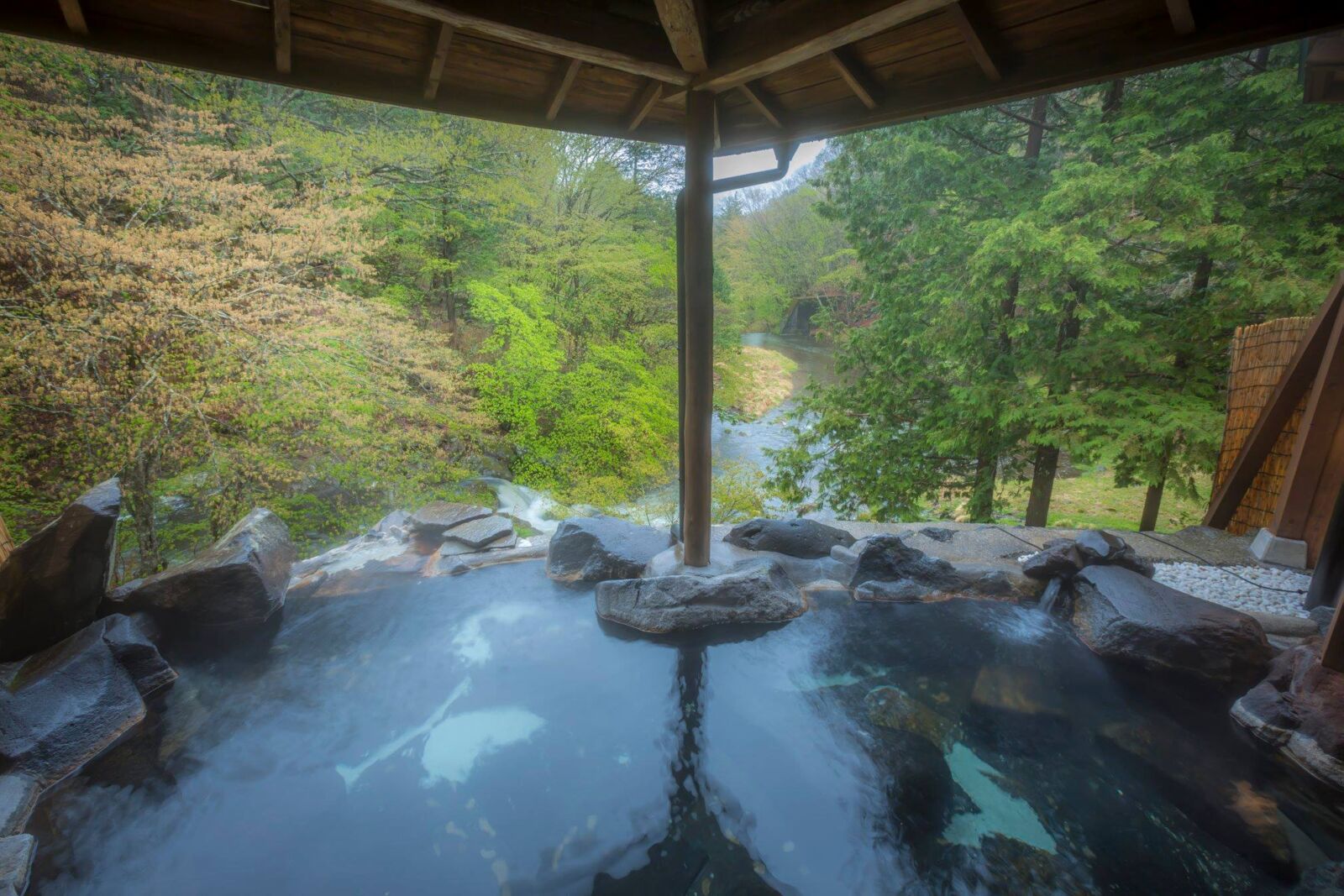
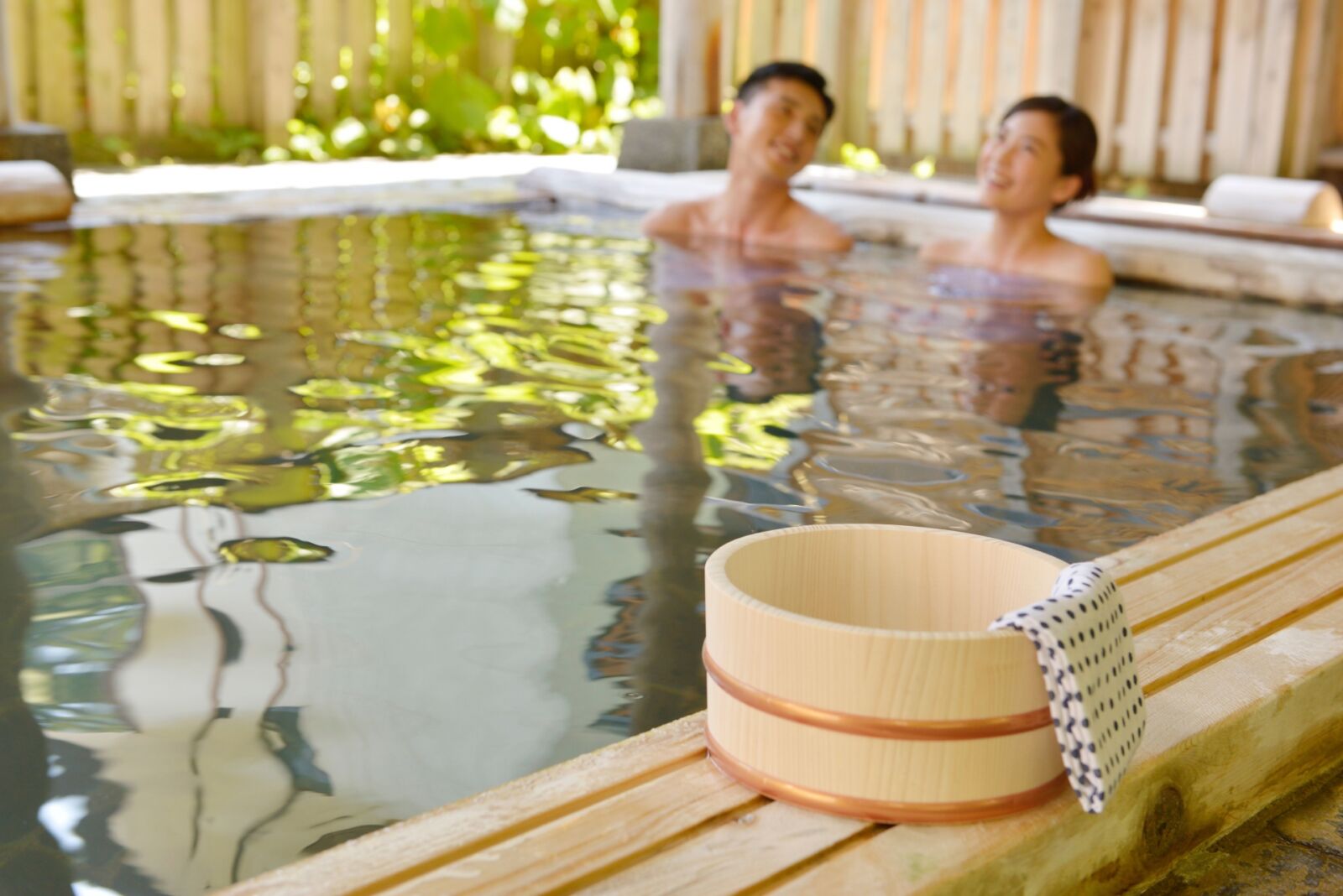
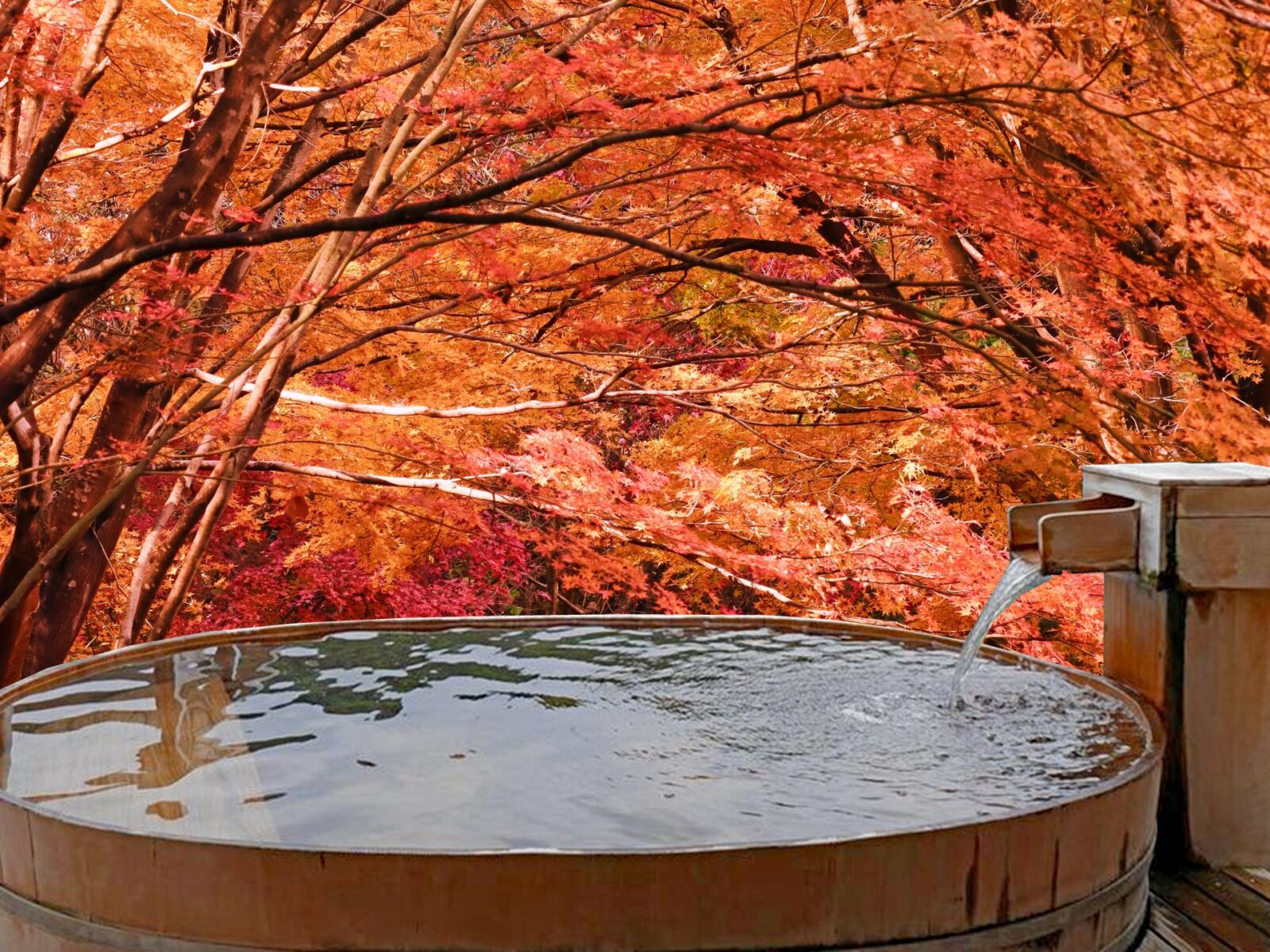
Nikko is situated in an area that is fuelled by the geothermal power of volcanic activity, making it a hot spot for onsen hot springs. As a pinnacle of Japanese culture that heavily focuses on wellness and relaxation whilst enjoying nature, you should absolutely try these experiences during your stay. Surrounded by the scenic beauty of the mountains, soaking your body in these naturally heated pools is simply divine and a one of a kind experience. You can book both public and private onsen at hotels and resorts, so depending on what experience you want and what your budget is keep this in mind.
Nikko has eight popular onsen resorts, with some of the most popular areas including the Chuzenji Onsen area and the Yumoto Onsen area. These onsen areas offer both outdoor and indoor baths with stunning views of nature. You can choose from both open air baths or closed off. We highly recommend trying an open air bath to enjoy breathing in the fresh mountain air as you unwind. It is important to note that many public Onsen will not allow tattoos to be on display. You may be asked to cover any visible tattoos up using large coverings or stickers. However, if this is something you don’t want to do, you can still hire your own private Onsen where you don’t have to worry about this. There are a few other rules that come with using Onsen, so check out our ’How to Do Tokyo Like a Local!’ page where we have a useful section on Onsen etiquette.
20 BEST THINGS TO DO IN & AROUND NIKKO
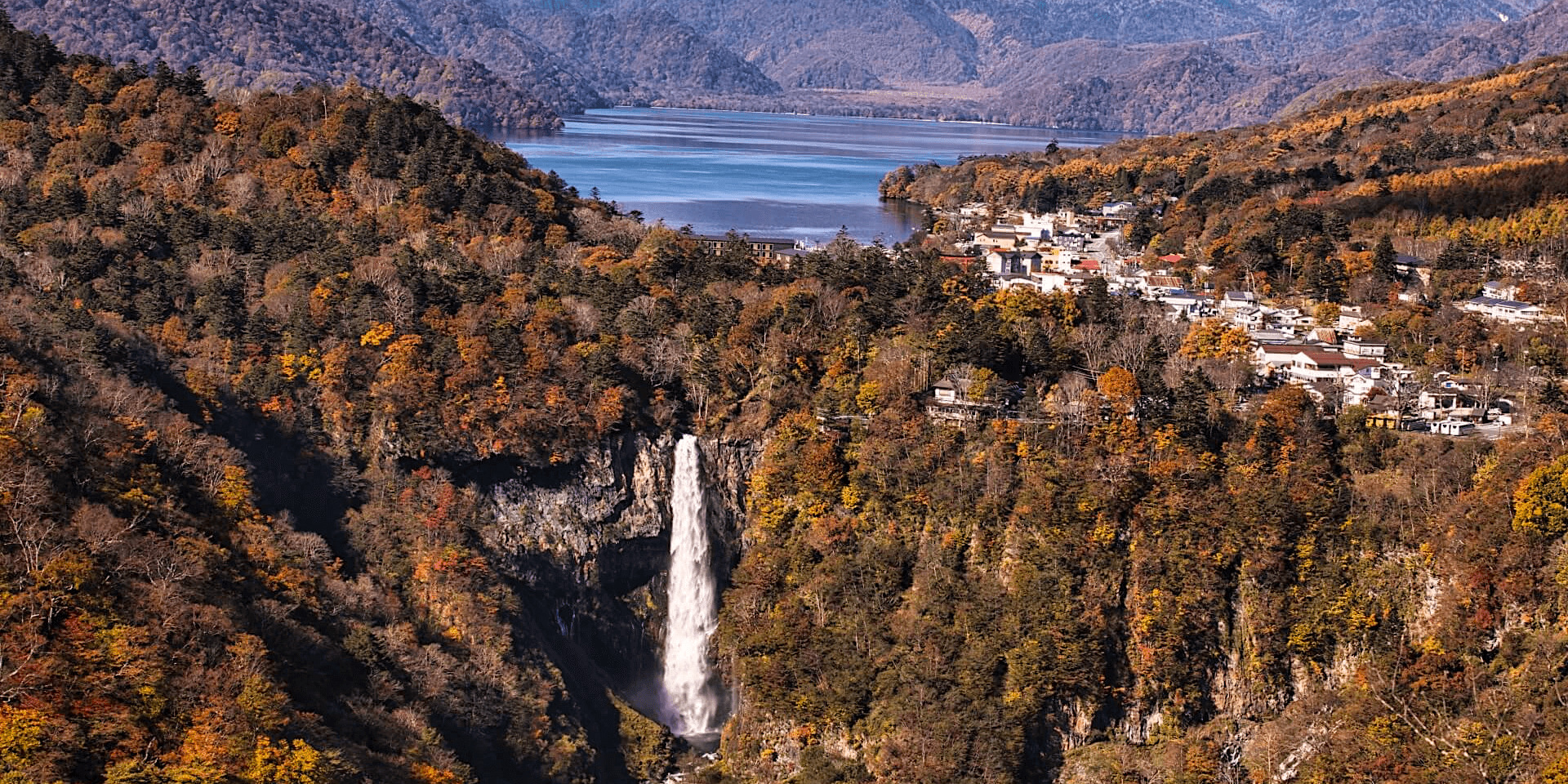
For many international visitors to Japan, Nikko is one of their ‘must-visit’ destinations thanks for the 17th century shrines and temples that are arguably the most beautiful historic buildings in the country. Spread across the Shinto shrines complexes of the ‘Toshogu’ and ‘Futarasan’ and the Buddhist temple complex of ‘Rinno-ji’, the Nikko shrine and temple complex comprises one hundred and three religious buildings set amongst a splendid natural setting. The main buildings of interest lie within an area of a couple of kilometres, making them easy to access on-foot or using frequent bus services that loop around the main sites. It is a destination that can be enjoyed all-year-round as each season highlights the beauty of the complex in a different manner. Indeed, while the shrines and temples are what draws most visitors to Nikko, once there you’ll discover a beautiful region of natural landscapes including waterfalls, gorges, hiking trails and hot spring towns worth taking time to enjoy over multiple days. Check out our ’20 Things to Do Around Nikko’ page to discover many of the wonderful attractions Nikko has to offer.
If you feel inspired to visit Nikko, join our ’1 Day Tour : Explore Nikko’s World Heritage and National Park’ tour which visits many of the attractions and sites mentioned above, and is a well balanced tour of both the Heritage sites and nature spots!
WHERE TO STAY IN & AROUND NIKKO
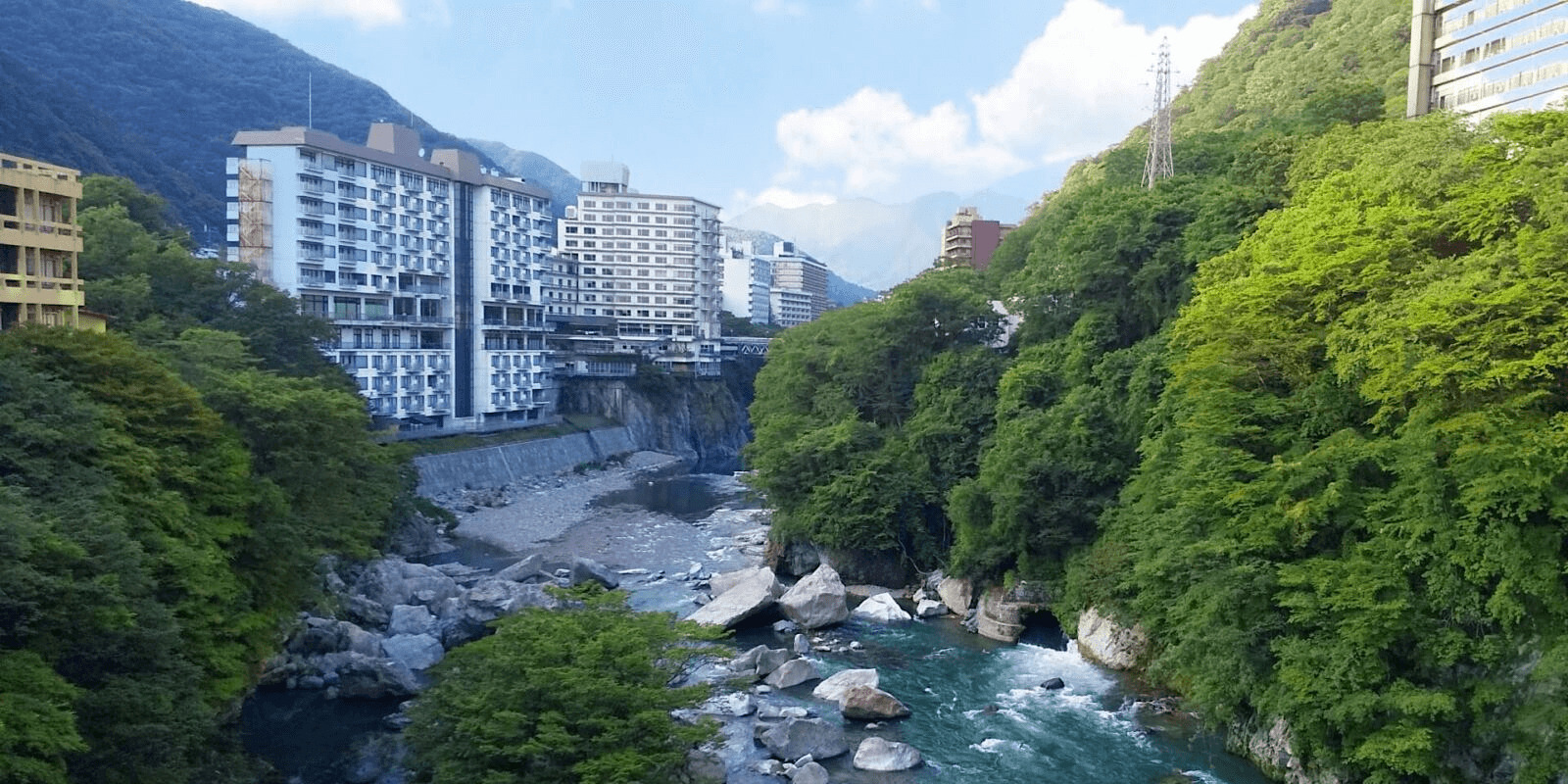
The World Heritage-listing of the Nikko shrine and temple complex ensures that it attracts millions of visitor each year. With that, there is plenty of accommodation to choose from in the centre of Nikko town with just as much in the surrounding areas and hot spring towns. Thanks to its elevation, the area has long been used as a place of retreat from the summer heat and humidity of Tokyo, and to this day Nikko boasts some of Japan’s oldest and best Meiji Period hotels and other accommodation. Check out our ’Nikko – Where to Stay’ page for more information!
GETTING TO & AROUND NIKKO
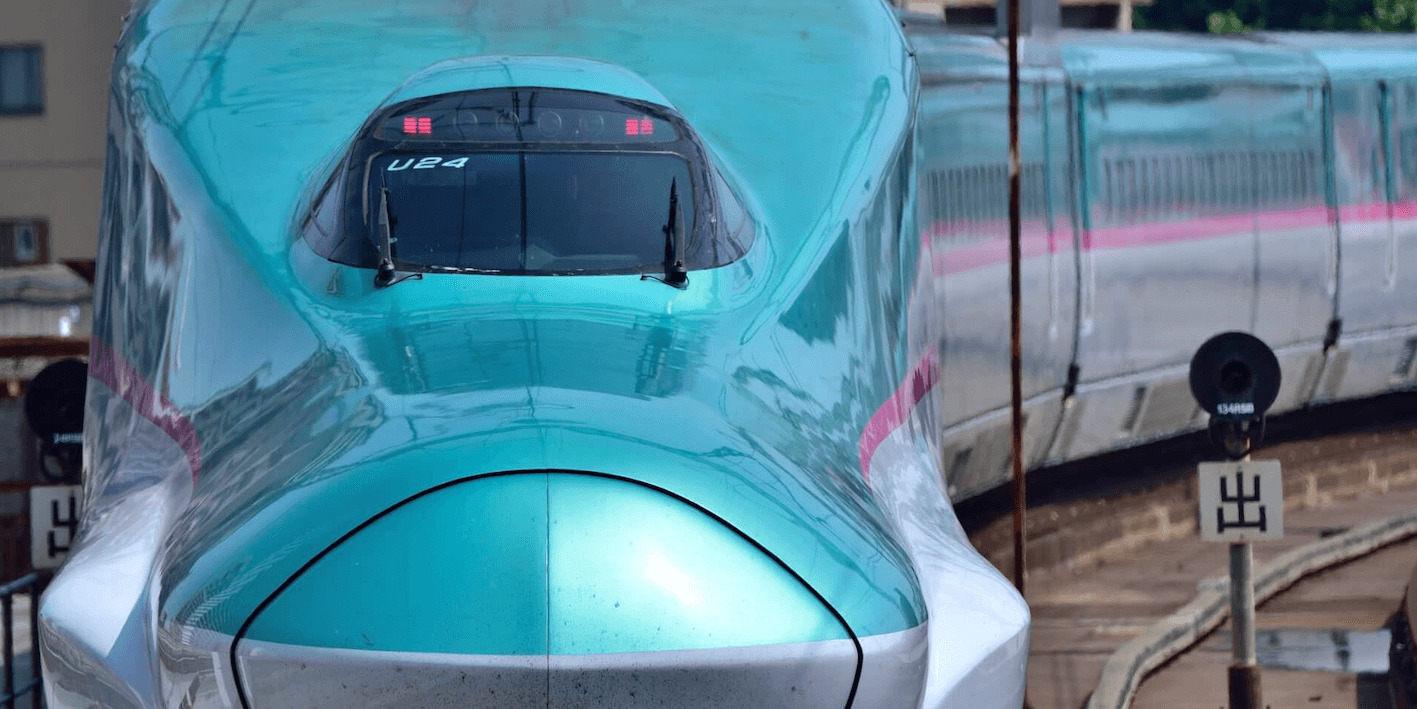
Nikko sits around 160km / 2 hours to the north of Tokyo and is easy to get to using train services running from the capital and other locations. Once in Nikko, bus services operate to and from the most popular destinations with the ‘Nikko Pass All area’ available to visitors. For complete information, see our ‘How to Get to Nikko’ page.
PLAN YOUR VISIT TO JAPAN
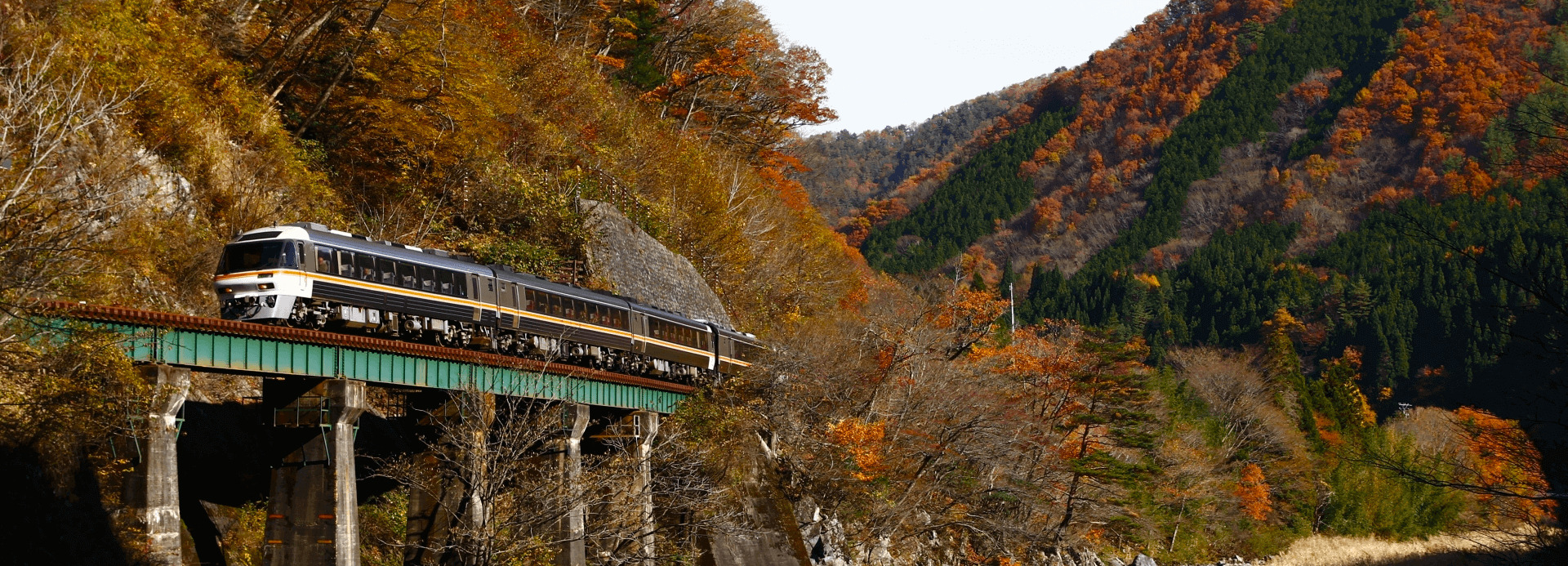

Heading to Nikko using the rail system is quick, easy and comfortable. Unfathomable in its size and efficiency, moving around the country by train opens-up all regions of Japan for exploration. Our ‘Plan Your Visit’ page has everything you need to know about visiting Japan – from tips on the best time to travel, times to avoid, entering and exiting the country, money matters, staying connected, accommodation, staying safe and healthy and plenty more to ensure that you get the most out of your time here.














